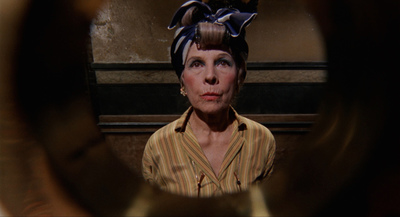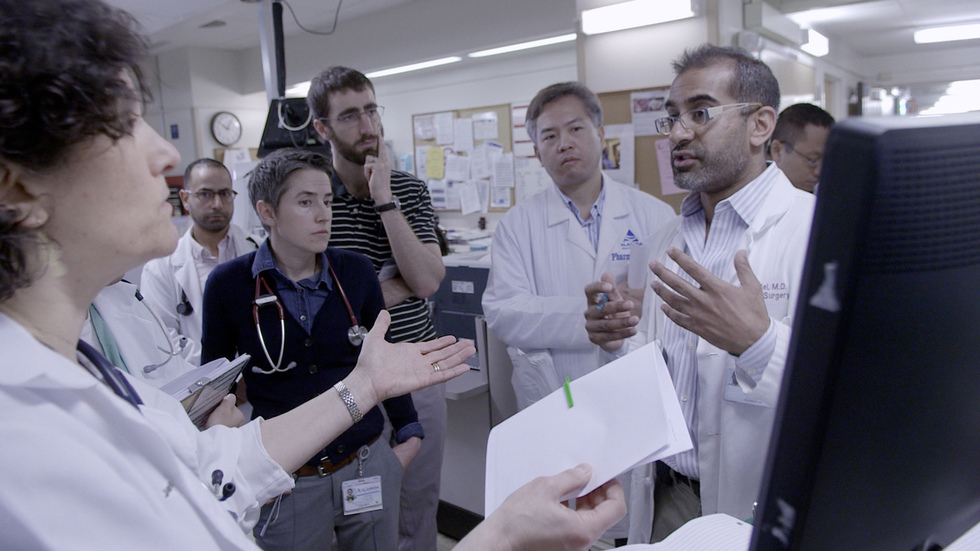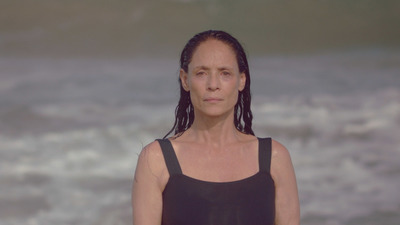
BY MATTHEW ENG |
Final Stages: Director Dan Krauss Looks at Life and Death in the Oscar-Shortlisted Documentary EXTREMIS
This Tribeca-selected documentary doesn't shy away from the distressing, day-to-day experiences of end-of-life care.

These days, so many documentaries are tagged with the descriptor of “difficult watch,” that it can be tricky to discern the films that are simply viewing their painful, chosen subjects from the ones that are actively and intelligently engaging with them, retrieving fresh insights and thorny questions in the process. Dan Krauss’ harrowing Extremis, which made its world premiere at the 2016 Tribeca Film Festival, achieves the latter effect through observational, bare-bones filmmaking that only looks like plain surveillance. It is, indeed, a “difficult watch,” but it is one made bearable by the stark yet intimate relation that the film maintains with its subjects.
In Extremis, available to stream on Netflix and recently shortlisted by The Academy for its Best Documentary Short prize, Krauss captures the process of life-or-death decision-making within the intensive care unit of Highland Hospital, a public institution in Oakland, California. Krauss gained an astonishing level of access to the often immobile and uncommunicative patients on life support, the family members vulnerably wading through a situation many of them never imagined having to confront, and the medical professionals who attempt to guide these loved ones toward a choice that will honor the patient’s best interests, while also tactfully and compassionately dispensing their own practical advice. Laudably well-balanced and emboldened with emotional honesty, Extremis catches so many moments of respectful debate and person-to-person empathy that its unobtrusive filmmaking ultimately proves not antithetical to human complexity, but distinctly solicitous of it.
I talked to Krauss, who is currently preparing to turn his 2013 documentary The Kill Team into a fictional feature starring Nat Wolff and Alexander Skarsgård, about the conception, production, and reception of his unshakeable documentary achievement.

How did this project take shape at Highland Hospital, particularly with this specific medical staff?
I was introduced to Dr. [Jessica] Zitter (pictured above), who is one of the featured physicians in the film. And I was really fascinated by what she was describing as such a big part of her work, because what she was describing were moments of deep human empathy with patients that really transcended medicine and science. She was describing conversations that really had to do with our core humanity and also questions that really seemed unanswerable to me. And I wondered how physicians and medical staff and people trained in science, who kind of deal with data and test results and numbers and are not really trained to have these conversations, navigate those waters and what those conversations with patients and families are like. So many of those discussions have to do with our values as people, our cultural and religious values, and have nothing to do with medicine. What was startling to me about the physicians, because it had never occurred to me, was how involved they were in such profound decision-making, so I was really intrigued by that. And [Dr. Zitter] invited me to come into the hospital and make the rounds with her. The ICU is a very difficult place to acclimate to, but once I acclimated to the environment and its intensity, I really saw these moments of extraordinary beauty. And I saw that faith and science were colliding in a really fascinating way. And I was drawn to that, even though I must admit that I’m somewhat uncomfortable with the topic of dying. But I was fascinated with the questions that these doctors and patients were confronting.
Did you initially come to Highland as just an observer or was this something you immediately knew you wanted to chronicle?
I wasn’t sure at all, actually. I was not committed to doing the film when I first visited the ICU. I wanted to see what the place was like and see if there was something that would spark my interest. And, quite frankly, I wanted to test myself and see if I could handle it, emotionally, whether it was a place I could spend some weeks or months. It was, at first, just really about testing the waters and understanding. I think any time you go into a new environment, there’s a period where you have to see through the noise and understand where the real weight of the story exists. So part of it was also just spending enough time there so that I could sort of see past the hubbub of the place and the daily goings-on, and find those moments of profound decision-making that had captivated me in that first conversation. When I started to get hints of that, I decided to bring in my camera and do a little bit of pilot-shooting to find my footing. And then it took off from there. The first day I brought in my camera, I instantly captured a wonderful discussion, that’s actually in the film, where some twenty doctors are all in a big huddle, trying to decide what to do about this patient. That was one of the very first things I filmed and when I saw that happen, I thought to myself, There’s something really urgent happening here that I feel like I can bring into a film.

In addition to these doctors and nurses, the level of access you had to the patients and their loved ones obviously required a great deal of trust between these subjects and you, as the filmmaker. I’m curious about how you secured their participation in the project, but also how you went about making them feel comfortable in front of the camera during such a distressing time for all involved.
It’s partly to the credit of the people who participated and were able to see the value of the film, even amidst this very difficult period in their lives. And that’s a gift to filmmakers. But, of course, I didn’t receive that gift from everybody I approached. The vast majority declined. But the few that agreed really saw that the camera was an opportunity to connect to other people. They understood the value of that and they wanted to be a part of that. They wanted to take an experience that would be, in other circumstances, considered pure loss and bring to that a sense of connection to others. I can completely understand why not everyone would see it that way and have the emotional bandwidth to contribute on that level. But those people that did were incredible human beings who I owe a great deal to. They were my partners in the making of the film. And I think the key, as ever, for me as a filmmaker — and this is true of all the films that I’ve done — is to make my subjects partners in the creation of the film and expose my own vulnerabilities to them, to share with them a sense of fear or emotional uncertainty, and be in it with them. Part of what was very challenging about the film — and really any film that requires unique access — is finding that sweet spot where you are present in an intimate way but not stepping over the line into intrusiveness. And that was a big focus of my work in the ICU: being present but behind the curtains, so that we felt like we were a part of these families’ very difficult decision-making, but not so close that it felt like we were violating a sacred space.
The film’s two foregrounded stories, about the patients Donna and Selena and their families, definitely seem to represent the two often opposing sides of the life support debate. But these stories are not the only ones we see, as there are patients who appear and disappear throughout the film. In a way, this myriad of perspectives prevents us from seeing this debate as a pure binary. What was your process of structuring these stories and at what stage did it become clear to you that Donna and Selena’s experiences were going to be integral to the film?
[The process] was a difficult one. Donna’s family was one of the first families that I really spent time with and I knew right away that they were special. From the earliest stages, it was clear that Donna’s family was going to have a major role in the film. What was really important to me was that the film not make any pronouncements of “right” or “wrong,” in terms of how these families made their decisions. I didn’t want to pass any judgment at all because, truthfully, there is no “right” or “wrong” decision. It’s only what’s right or wrong for the patient and the families. It was important to me to have at least two stories where families made very different decisions when confronted with the same challenges. I wanted to let each of these [stories] play out fully so that we could experience what these families were bringing with them, in terms of cultural and religious beliefs, and how that might have affected the way they went about making decisions. Both [families] chose what they felt were right for their family members, even though the process to getting there was very different. One decided to continue with life support and the other didn’t. And those were both right decisions. And that was important to me, to have two right decisions that were each very different.
As for the other patients and families that make briefer appearances, I wanted to represent my experience of being in that ward and seeing, really, a sea of humanity passing through. Walking down the hall of that place, each patient’s room is this big glass window with a curtain. But if the curtain is not drawn, you can see into each of these rooms. And as you walk down the hallway, there’s this incredible human drama playing out in every one of these rooms along the ward. I wanted to have moments where you understood that families and patients of all different backgrounds are all involved in this ongoing influx. Besides the main vignettes, we wanted to slip in other questions that I often saw being asked in the ICU. The most common question was, “How do we make a decision on behalf of a patient who has either limited decision-making capacity and/or no one to make that decision?” So many patients had no family or friends, which is why we stop for a moment on the homeless man who has no decision-making partners. And it was important to show how the doctors have this great deal of responsibility that transcends their medical-training when it comes to these decisions. It was partially done to give a broader scope to the film, but also to show that there are many, many more urgent questions that these doctors and patients are confronting on a daily basis. And they are complicated and unanswerable questions.

What has the audience response been like?
The response has been extraordinary. It’s a challenging subject matter and it’s hard to get people to sit down and watch a subject like this. But I’ve been so encouraged because people have really seen the courage and dignity that these patients and their families brought to the process. So much of the audience response has been delightful because people have recognized that the film is wrenching, emotionally, but it also has this tenderness that sort of shines through. So it’s not a desperately sad, morbid piece. It’s actually, on some level, a very hopeful piece. I like to think of it as a film about empathy and love, which we obviously need now more than ever. The fact that people have responded to it on that level has been extremely gratifying. And then, of course, it’s on Netflix, so it’s reaching well, well above eighty million people worldwide in many different languages. I receive emails and tweets from all over the place. This is an issue, obviously, that touches every single human on earth. And people in different countries, from different cultures and religious backgrounds, are finding the film resonant. The scale of response from the Netflix launch has been really staggering to witness. And, of course, it’s something that couldn’t have been done five years ago.
How has making Extremis changed you as a filmmaker?
On one level, it’s given me hope for humanity. Even when faced with profoundly difficult circumstances, so many of the people in our country and around the world don’t abandon courage and dignity, even though they have every excuse to do so. Part of the process of making art is about embracing fear. For me, this film was a way to address my own discomfort with the topic of dying. I challenged myself to take on this film precisely because I knew it was something with which I was not entirely comfortable. Often as a filmmaker, or any kind of artist, you have to move in the direction of your fear.

